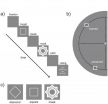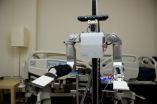(Press-News.org) As many as 100 million Americans may currently be misclassified as having abnormal blood pressure, according to Dr. Brent Taylor from the Veterans Affairs Health Care System in Minneapolis and the University of Minnesota and his colleagues. Their findings1 show that these people are not actually more likely to die prematurely than those with 'normal' blood pressure, i.e. below 120/80. Taylor and colleagues' article in the Journal of General Internal Medicine², published by Springer, also shows that in those under 50, diastolic blood pressure* is the more important predictor of mortality, whereas in those over 50, systolic blood pressure* is the stronger predictor. The authors argue it is time to consider a new definition of 'normal' blood pressure.
Taylor and colleagues examined the independent contribution of diastolic blood pressure (DBP) and systolic blood pressure (SBP) on mortality, as well as how these relationships might affect the number of Americans currently labelled as having abnormal blood pressure.
The authors looked at data for 13,792 people from the National Health and Nutrition Examination Survey, which enrolled participants in 1971-76 and followed them up for two decades – they studied DBP, SBP and long-term survival data specifically. In order to assess the underlying distribution of untreated blood pressure in American adults by age, Taylor and team also looked at data for 6,672 adults from the first National Health Examination Survey carried out between 1959 and 1962.
They found that in people aged over 50, those with SBPs above 140, independent of DBP, were significantly more likely to die prematurely. In those aged 50 or less, DBPs above 100 were linked to significant increases in premature death. The authors' analysis offers alternative cut-off points for the definition of 'normal'.
Dr. Taylor concludes: "Our findings highlight that the choice of approach used to define normal blood pressure will impact literally millions of Americans. If we cannot reliably see an effect on mortality in a large group of individuals followed for nearly 20 years, should we define the condition as abnormal? We believe considering this kind of approach represents a critical step in ensuring that diagnoses are given only to those with a meaningful elevation in risk, and targeted towards individuals most likely to benefit."
###
* Diastolic blood pressure is the lowest pressure within the bloodstream, occurring between heart beats i.e. when the heart relaxes. Systolic blood pressure is the highest pressure within the bloodstream, occurring during each heart beat i.e. when the heart contracts.
References
1. Taylor BC et al (2011). Impact of diastolic and systolic blood pressure on mortality: implications for the definition of 'normal'. Journal of General Internal Medicine. DOI 10.1007/s11606-011-1660-6
2. The Journal of General Internal Medicine is the official journal of the Society of General Internal Medicine.
The full-text article is available to journalists on request.
Redefining normal blood pressure
Current US definition of 'normal' blood pressure may unnecessarily label 100 million Americans as 'abnormal'
2011-03-10
ELSE PRESS RELEASES FROM THIS DATE:
Learning to see consciously
2011-03-10
Our brains process many more stimuli than we become aware of. Often images enter our brain without being noticed: visual information is being processed, but does not reach consciousness, that is, we do not have an impression of it. Then, what is the difference between conscious and unconscious perception, and can both forms of perception be changed through practice? These questions are important not only for basic research, but also for the treatment of patients with perceptual deficits due to brain lesions e.g. following a stroke. Scientists at the MPI for Brain Research ...
How do people respond to being touched by a robot?
2011-03-10
For people, being touched can initiate many different reactions from comfort to discomfort, from intimacy to aggression. But how might people react if they were touched by a robot? Would they recoil, or would they take it in stride? In an initial study, researchers at the Georgia Institute of Technology found people generally had a positive response toward being touched by a robotic nurse, but that their perception of the robot's intent made a significant difference. The research is being presented today at the Human-Robot Interaction conference in Lausanne, Switzerland.
"What ...
Toward real time observation of electron dynamics in atoms and molecules
2011-03-10
Quebec City, March 9, 2011 – Another step has been taken in matter imaging. By using very short flashes of light produced by a technology developed at the national infrastructure Advanced Laser Light Source (ALLS) located at INRS University, researchers have obtained groundbreaking information on the electronic structure of atoms and molecules by observing for the first time ever electronic correlations using the method of high harmonic generation (HHG). Made by a team of researchers from the Energy, Materials, and Telecommunications Center of INRS and the National Research ...
Combating cucurbit yellow stunting disorder virus
2011-03-10
This release is available in Spanish.
U.S. Department of Agriculture (USDA) scientists are working to give melon growers some relief from cucurbit yellow stunting disorder virus, or CYSDV.
In 2006, Agricultural Research Service (ARS) plant pathologist Bill Wintermantel with the U.S. Agricultural Research Station in Salinas, Calif., and university colleagues identified the plant disease that growers in California's Imperial Valley and nearby Yuma, Ariz., noticed was spreading through their cucurbit fields. Cucurbit crops affected included cantaloupe and honeydew melons.
ARS ...
Synthetic biology: TUM researchers develop novel kind of fluorescent protein
2011-03-10
This release is available in German.
Proteins are the most important functional biomolecules in nature with numerous applications in life science research, biotechnology and medicine. So how can they be modified in the most effective way to attain certain desired properties? In the past, the modifications were usually carried out either chemically or via genetic engineering. The team of Professor Arne Skerra from the TUM Chair of Biological Chemistry has now developed a more elegant combined solution: By extending the otherwise universal genetic code, the scientists are ...
Banana peels get a second life as water purifier
2011-03-10
To the surprisingly inventive uses for banana peels — which include polishing silverware, leather shoes, and the leaves of house plants — scientists have added purification of drinking water contaminated with potentially toxic metals. Their report, which concludes that minced banana peel performs better than an array of other purification materials, appears in ACS's journal Industrial & Engineering Chemistry Research.
Gustavo Castro and colleagues note that mining processes, runoff from farms, and industrial wastes can all put heavy metals, such as lead and copper, into ...
An advance toward blood transfusions that require no typing
2011-03-10
Scientists are reporting an "important step" toward development of a universal blood product that would eliminate the need to "type" blood to match donor and recipient before transfusions. A report on the "immunocamouflage" technique, which hides blood cells from antibodies that could trigger a potentially fatal immune reaction that occurs when blood types do not match, appears in the ACS journal, Biomacromolecules.
Maryam Tabrizian and colleagues note that blood transfusions require a correct match between a donor and the recipient's blood. This can be a tricky proposition ...
New study shows government spending preferences of Americans
2011-03-10
In its 27th survey of American spending priorities since 1973 conducted as part of its General Social Survey (GSS), NORC at the University of Chicago Wednesday released a report on its most recent findings. By a notable margin, education and health care were the top two spending priorities of Americans. And Americans are consistent in that: those two categories have finished in the top two in each of the ten surveys since 1990.
The spending priorities report is derived from recently released data of the 2010 General Social Survey which NORC has conducted for forty years. ...
New molecular robot can be programmed to follow instructions
2011-03-10
Scientists have developed a programmable "molecular robot" — a sub-microscopic molecular machine made of synthetic DNA that moves between track locations separated by 6nm. The robot, a short strand of DNA, follows instructions programmed into a set of fuel molecules determining its destination, for example, to turn left or right at a junction in the track. The report, which represents a step toward futuristic nanomachines and nanofactories, appears in ACS's Nano Letters.
Andrew Turberfield and colleagues point out that other scientists have developed similar DNA-based ...
Battling the bedbug epidemic
2011-03-10
Mom's comforting tuck-them-in-words — "Sleep tight, don't let the bedbugs bite"— is becoming an impossible dream for millions of people as the world experiences a resurgence of an ancient scourge that is fostering human misery, financial burdens and the risk of exposure to potentially toxic materials. That's the message from the cover story of the current edition of Chemical & Engineering News (C&EN), ACS' weekly newsmagazine.
In the article, C&EN News Editor William G. Schulz points out that bedbugs represent a growing epidemic that is difficult to control. The bugs ...
LAST 30 PRESS RELEASES:
Making lighter work of calculating fluid and heat flow
Normalizing blood sugar can halve heart attack risk
Lowering blood sugar cuts heart attack risk in people with prediabetes
Study links genetic variants to risk of blinding eye disease in premature infants
Non-opioid ‘pain sponge’ therapy halts cartilage degeneration and relieves chronic pain
AI can pick up cultural values by mimicking how kids learn
China’s ecological redlines offer fast track to 30 x 30 global conservation goal
Invisible indoor threats: emerging household contaminants and their growing risks to human health
Adding antibody treatment to chemo boosts outcomes for children with rare cancer
Germline pathogenic variants among women without a history of breast cancer
Tanning beds triple melanoma risk, potentially causing broad DNA damage
Unique bond identified as key to viral infection speed
Indoor tanning makes youthful skin much older on a genetic level
Mouse model sheds new light on the causes and potential solutions to human GI problems linked to muscular dystrophy
The Journal of Nuclear Medicine ahead-of-print tip sheet: December 12, 2025
Smarter tools for peering into the microscopic world
Applications open for funding to conduct research in the Kinsey Institute archives
Global measure underestimates the severity of food insecurity
Child survivors of critical illness are missing out on timely follow up care
Risk-based vs annual breast cancer screening / the WISDOM randomized clinical trial
University of Toronto launches Electric Vehicle Innovation Ontario to accelerate advanced EV technologies and build Canada’s innovation advantage
Early relapse predicts poor outcomes in aggressive blood cancer
American College of Lifestyle Medicine applauds two CMS models aligned with lifestyle medicine practice and reimbursement
Clinical trial finds cannabis use not a barrier to quitting nicotine vaping
Supplemental nutrition assistance program policies and food insecurity
Switching immune cells to “night mode” could limit damage after a heart attack, study suggests
URI-based Global RIghts Project report spotlights continued troubling trends in worldwide inhumane treatment
Neutrophils are less aggressive at night, explaining why nighttime heart attacks cause less damage than daytime events
Menopausal hormone therapy may not pose breast cancer risk for women with BRCA mutations
Mobile health tool may improve quality of life for adolescent and young adult breast cancer survivors
[Press-News.org] Redefining normal blood pressureCurrent US definition of 'normal' blood pressure may unnecessarily label 100 million Americans as 'abnormal'

